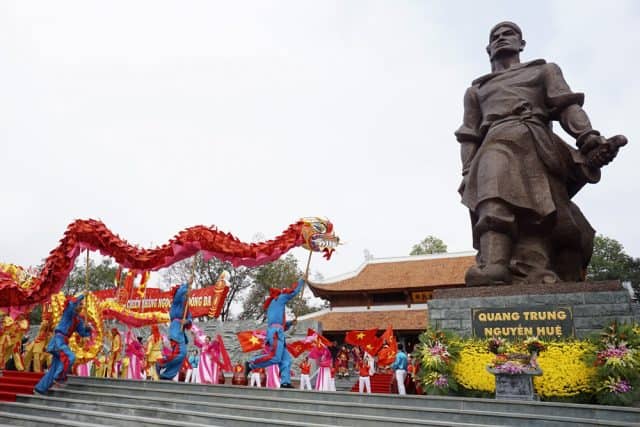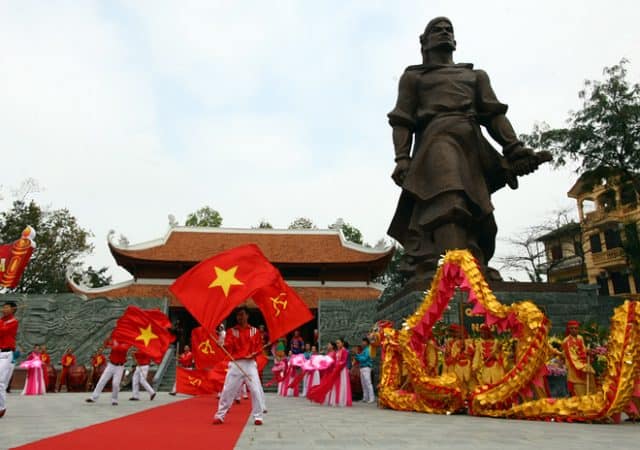Dong Da mound, located in the center of Dong Da district, is a relic with many great historical values, proving the glorious victory of the hero Quang Trung and the Vietnamese people.
History of Dong Da Go
The night of the 4th to the early morning of the 5th of January, the year of the Rooster, 1789, the battle of the Tay Son insurgents led by Admiral Dang Tien Dong destroyed the Qing army’s Khuong Thuong post, causing Thanh General Sam Nghi Dong to hang himself. died in the Oc mountain banyan tree (now near Chua Boc). This battle paved the way for King Quang Trung’s army from Ngoc Hoi to enter Thang Long citadel. The Thanh army died like stubble, Quang Trung ordered to collect the enemy’s corpses into 12 wide pits for burial. But due to too many enemy corpses, high mounds were formed from Thinh Quang to Nam Dong. Later, on these mounds, there were overgrown banyan trees, so our people called them Go Dong Da. In the fourth year of Tu Duc – 1851, there was an order to open a road to open a market in the area bordering Thinh Quang and Nam Dong. During the excavation process, there were many remains piled up on top of each other, people collected them and buried them in a pit adjacent to Xua Mountain to form the 13th mound – the mound remains to this day. In 1890, the French colonialists expanded Hanoi, 12 old mounds were razed.
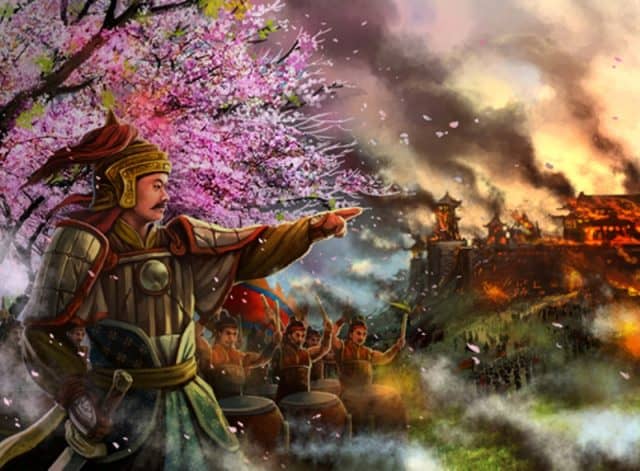
Simulating the image of King Quang Trung destroying the Qing army (Photo: Collected)
Besides, there are also many theories that Dong Da Go is a natural mound formed about 4000 years ago.
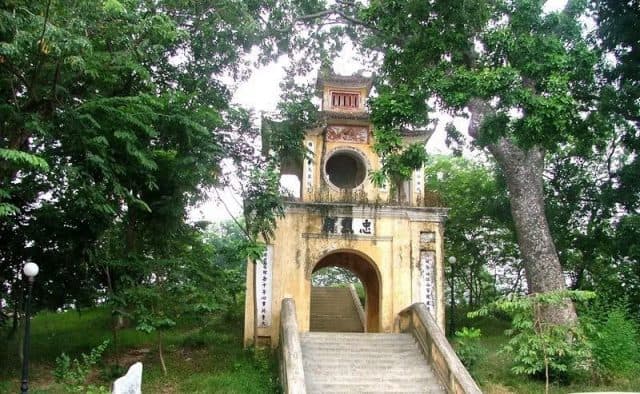
Today’s Go Dong Da relic (Photo: Collectibles)
Park – Go Dong Da relic site
In 1989, on the occasion of the 200th anniversary of the Ngoc Hoi – Dong Da victory, the Hanoi People’s Committee issued a decision to establish Dong Da Cultural Park on the basis of the Dong Da area. The total area of the park is up to 21,745m2, including 2 areas: the statue of King Quang Trung, the gallery and the old Dong Da Go area.
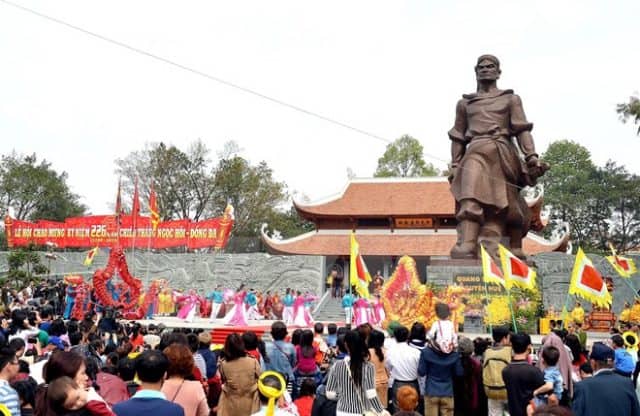
The area of the statue of King Quang Trung (Photo: Collectibles)
The monument area with an area of about 15,000m2, has a statue of King Quang Trung made of reinforced concrete weighing 200 tons, 14.65m high and 2 reliefs depicting the battle of our army under the command of Quang Trung. .

Statue of King Quang Trung (Photo: Collectibles)

The bas-relief at Dong Da Go (Photo: Collectibles)
Behind the monument is a gallery with an area of 100m2. Outside the door, there is a model simulating two cannons used in the old battle.

In front of the gallery (Photo: Collectibles)
Dong Da Go area has an area of 6275m2, the main gate is located on Tay Son street. Previously, above the main gate leading up to the mound, there was Trung Liet temple to worship the souls who died at the battle in the year of the Rooster, but now this temple is no longer there.
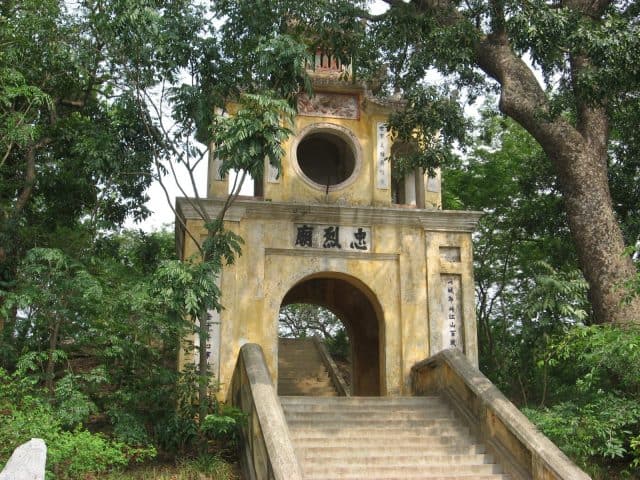
Trung Liet Temple (Photo: Collectibles)
In 1990, an 8-ton stele was erected on top of the mound. On it were engraved the words of King Quang Trung: “…Stripping for the heroic ruler of the Southern kingdom…” means that the heroic nation of the South has its owner.
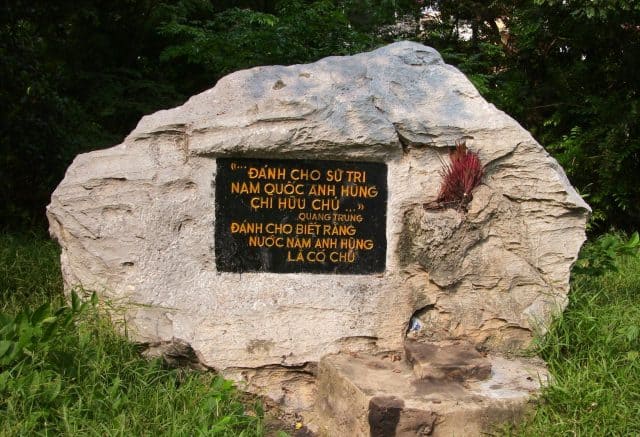
Stone stele atop Dong Da Go (Photo: Collectibles)
Dong Da Go Festival
Go Dong Da Festival takes place on January 5 every year to commemorate the great merits of the people who made the victory in the spring of the Rooster that year. People from all over the world gather here to offer incense and perform ceremonies to create a joyful and bustling atmosphere. At the festival, there is also an activity to reenact the scene where King Quang Trung destroyed the Qing army and entered Thang Long citadel to revive the magnanimous Tay Son spirit.
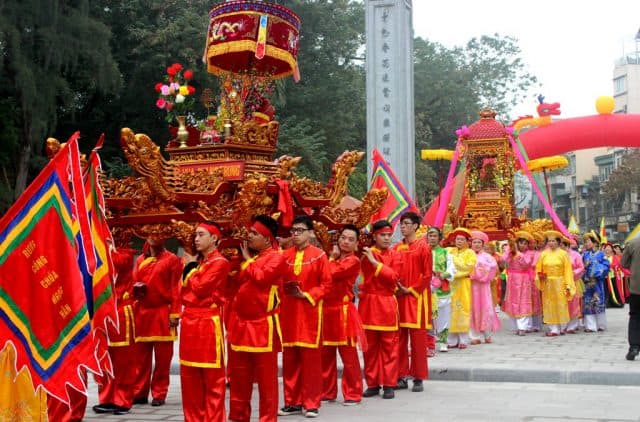
Dong Da Go Festival (Photo: Collectibles)
Through the ups and downs of time, Go Dong Da is still a testament to a glorious battle of the nation and the pride of every Vietnamese people.
Source: Collected internet.
